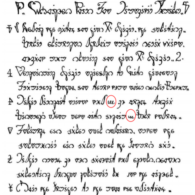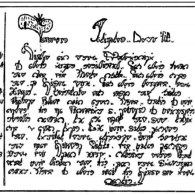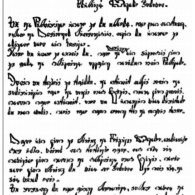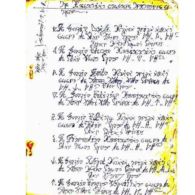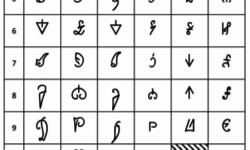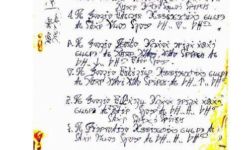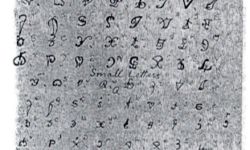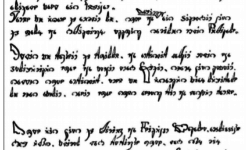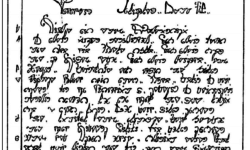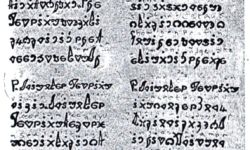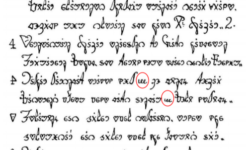Profile
Medefaidrin is one of more than a dozen examples of a “spirit script” – that is, a writing system based on symbols or characters revealed in a dream or vision. Spirit scripts demonstrate not only the desire by a community to have its own writing system, but the way in which letters themselves, especially those used only in sacred activities or rituals, can be icons in themselves, glowing with numinous power.
The language is spoken by a Christian group known as the Oberi Okaime (“freely given”) Christian Church in the Ibiono and Itu Local Government Areas of Akwa Ibom State in the oil-rich Niger delta region of Nigeria.
According to the community, the written language was revealed in 1927 to one of the founders of the community, Bishop Aikeld Ukpong (also known as Michael Ukpong) on a “spiritual board” visible only to the initiated, after Ukpong had been taken into seclusion by the Holy Spirit. But since Ukpong himself was not literate, it fell on the secretary of the group, Prophet Jakeld Udofia, to transcribe the writing – an especially interesting and ambitious achievement, given that at the time Ibibio – the native language of the Ibibio people of the state – was not a written language.
The community continued to develop the language and script through the 1930s and then started a school in which children were instructed in Medefaidrin. British authorities closed the school within a year, but the community continued to use Medefaidrin for church activities, including liturgy and hymns, and for letters and written contracts between members. The language faded from use, but in 1986, Udofia began teaching it again in the church’s Sunday school in Ididep.
The Department of Linguistics and Nigerian Languages of the University of Uyo, Nigeria, is reported to be promoting and supporting the language-revitalisation efforts of Medefaidrin through language-documentation projects, including scanning old handwritten texts, the development of a multilingual e-dictionary and research projects by staff and graduate students of the department.
“These days,” writes Professor Eno-Abasi Urua of the University of Uyo, “Medefaidrin is used exclusively in a religious context, with very few fluent speakers. Our role has been to try to preserve what is left of the language through digitization, especially the scripts which have been the worse for wear.”
The religious community reportedly numbers about 4,000 members, but there are fewer than twenty adult speakers of Medefaidrin and only a handful have mastered the script, meaning that Medefaidrin is among the world’s most endangered alphabets.
–Edited and updated by Eddie Tolmie.
You can help support our research, education and advocacy work. Please consider making a donation today.

